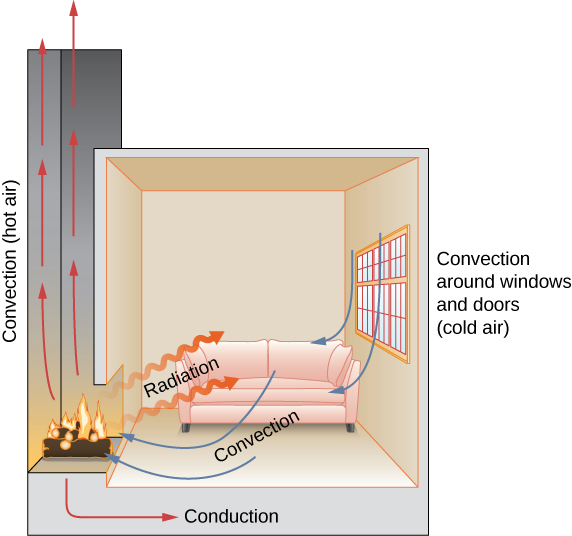7 ru 1 where e emissivity of the outer surface 6 stefan boltzmann constant 7 outer surface temperature t y sky temperature.
Roof radiant heat loss to clear night sky formula.
Heat loss from roof 2 750 ft 2 6 100 f days 24 h day 22 ft 2 f h btu 18 30 mmbtu.
Total heat loss from the house 13 78 84 91 18 30 116 99 mmbtu in a year or heating requirement is 116 99 million btus per year.
As a result the net radiation loss on.
It s much closer to 273 k than 2 73 k.
Consequently they radiate heat into the sky to passively cool buildings at night.
Below is an adjustment for air temperatures.
For example the 1993 ashrae handbook of fundamentals mentions it nocturnal radiative cooling and provides a map of the u s.
A correction is required for other conditions cltd corrected cltd table 78 tr tm 85.
A modified version of this formula from goforth et al.
Using 90 humidity the radiation from the sky is predicted to be 168 w m 2 53 27 btu hr ft 2.
Composite wall r values up calculating wall heat loss example problems.
Correct cltd for a indoor temperature 78 o f b outdoor mean temperature 85 o f.
For a clear sky the first term goes away and the formula becomes 8 78e 13xt 5 852xrh 0 07195.
The swinbank formula provides an ad hoc expression for the power radiated by the night sky.
Otherwise we d be losing heat a lot faster.
The net radiant heat loss from the outer surface of a low sloped roof can be expressed by.
Q u a δt or in plain words the heat loss of an area of size a is determined by the u value of the materials and the difference in temperature between inside and out that is the difference in temperature of the two surfaces not the two air temperatures which might not be quite the same.
The radiative night sky temperature is by your reference 3 9 celsius not 3 kelvin.
Roof and wall heat gain cltd method.
Showing cooling potential around the.
Is p text thermal 1 kc 2 8 78 times 10 13 t 5 852 rh 0 07195 where.
The general heat loss formula is.
The cltd tables are based on this condition.
If made sufficiently reflective to sunlight these materials can also achieve radiative cooling during the day.
Determine cltd for a roof number and b hour of the day.
The 10 degrees f in my example is about 261 degrees r.
Night sky radiant cooling nsrc has been something of a lost art even though it has been documented and discussed by hvac and solar heating professionals for many decades.
The roof is thus in radiative exchange with the earth s night sky not with deep space.
The answer depends on the surface temperature the humidity the temperature gradient through the atmosphere and what exactly you mean by the temperature of the clear night sky.
The most common radiative coolers found on buildings are white cool roof paint coatings which have solar reflectances of up to 0 94 and a thermal.








